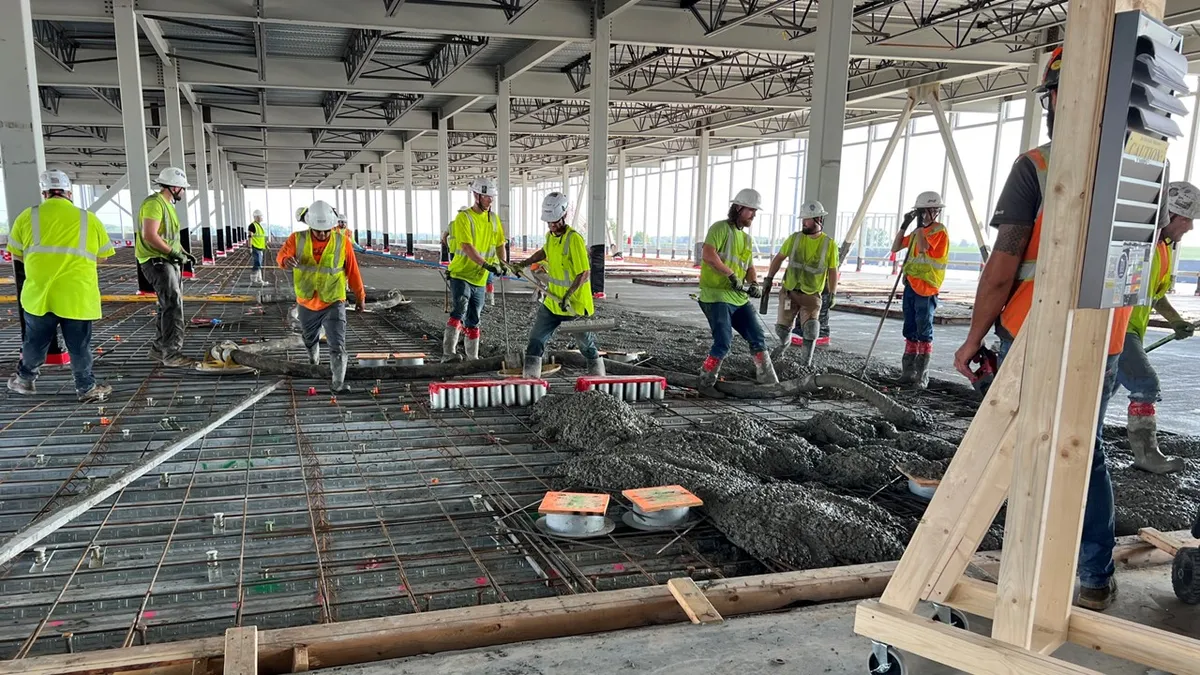Dive Brief:
- A study looking at the effects of working outside in hot weather by New York City-based Turner Construction discovered many workers’ core body temperatures reached risky levels even on moderate summer days.
- The heat pilot study, conducted over three days last summer with an average peak temperature of 88 degrees Fahrenheit, found that 43% of the 33 workers monitored had core temperatures reach over 100.4 F, even in “cooler than typical summer conditions.” OSHA lists 100.4 F as the benchmark for an elevated risk of heat stress.
- In partnership with the University of New Mexico, Indiana University and La Isla Network — an Alpharetta, Georgia-based organization researching the effects of heat on workers — the study was designed to better understand how increased temperatures affect jobsite safety.
Dive Insight:
Prior to the study, participants swallowed a data collection device, which remained in their bodies for 24 hours. The object, the size of a pill, allowed researchers to continuously monitor internal body temperature. Each worker participated for only one day.
“There is a lack of awareness about the serious consequences of extreme heat on our business,” said Monika Serrano, resilience project manager at Turner.
As the climate changes, Serrano said, outdoor working conditions can become more hazardous, creating concerns about the health of workers like those in construction or agriculture. The earth’s average surface temperature is now about 2 degrees F hotter than it was in the late 1800s, according to the Fifth National Climate Assessment released by the U.S. Global Change Research Program last year.
Researchers said if elevated core temperatures were prolonged, they could result in permanent damage to a person’s health.
“The findings demonstrate that in periods of extreme hot weather, such as during heat waves, construction workers are at substantial risk of heat-related health issues,” reported Fabiano Amorim and Zachary Schlader, associate professors at NMU and IU, respectively, and the lead researchers on the pilot study. “This research emphasizes the urgent need for strategies to protect the health and safety of construction workers.”
Dehydrated at work
Serrano said researchers also learned that most workers arrived at the jobsite already dehydrated.
“Knowing that, we have a really clear opportunity to do direct outreach about hydrating outside of work,” she said.
Amid record-breaking temperatures last summer, President Joe Biden enacted plans to protect workers from extreme heat, asking the Department of Labor to issue a hazard alert for high heat, equipping employers and workers with information on protecting themselves in the unsafe conditions.
OSHA lacks a federal heat standard, and though it has started creating one, the process is arduous and lengthy. For the time being, employers are left to create their own hot weather strategies based on the agency’s recommendations around water, rest and shade.














